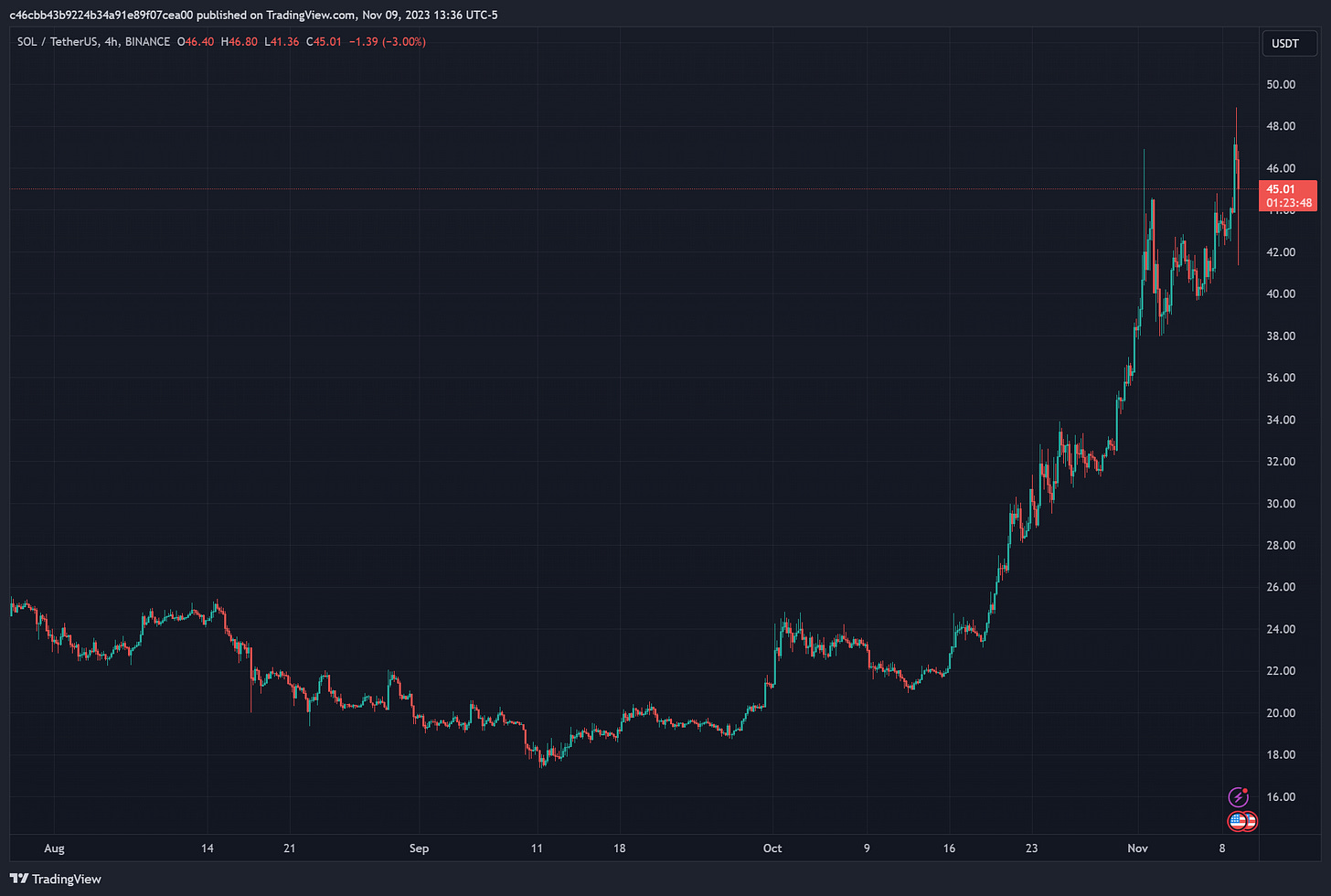What's the value of SOL if transactions are cheap?
The math behind Solana's profitability and financials. It's super simple.
A common argument against Solana concerns $SOL’s viability as an (investable) asset. Variations of this you may hear crypto Twitter/X as:
Solana may be useful but it doesn’t capture value.
Solana validators are subsidized so the system is not sustainable.
Optimizing for low fees will always mean $SOL isn’t valuable.
My response: “Guys, what the fuck are you talking about?”
Given the assumption that the Solana network is resilient and decentralized (vaguely defined, and a topic I can get into at another time), the goal of execution in these systems is to make it as cheap as possible.
Fast and cheap equals utility. And given there are no settlement failures in these systems, calling something a settlement or execution layer doesn’t really make sense.
Our goal is to maximize utility. This is how we maximize value to end-users.
Needlessly rent-seeking from a group of ~10,000 active users is not the goal we are optimizing for if we are trying to get to billions of DAUs.
Regardless, the point of this post isn’t to argue about which path of scaling is the best — it’s to make the point that it’s quite easy to get to exciting profit/revenue numbers if product-market fit is ever achieved.
If SOL is successful, it will be valuable.
The mathematics of SOL the asset and its value capture
A couple of facts:
Solana gas fees paid by users were ~$100k yesterday.
50% goes to validators and 50% is burned
$50k is paid for service provision.
$50k is distributed to token holders.
A mechanic not dissimilar to ETH burn.
Solana’s inflation rate is ~5.7%.
Started from 8%.
Decreases by 15% per year.
Long-term aim at 1.5%.
It’s important to note for all blockchains these parameters are modifiable. All that matters is sufficient incentives for validators to be honest and then you can start “paying” token holders:
Base fee per transaction (on top you will have priority fees always).
Revenue split (dynamic, algorithmic, fixed).
Inflation rate (i.e. subsidy).
Today, Solana is not profitable (not dissimilar to Ethereum in its early days):
Solana supply = 562,119,561 SOL
5.7% inflation = 32,040,814 SOL = $1,440,875,405
Revenue annually = $100,000 x 365 = $36,500,000
Net loss = - $36,500,000 = $1,404,375,400
Breakeven requirement = $1,440,875,405 / $36,500,000 = 39.48x
Solana needs about a 40x increase in transactions at today’s fee levels.
Modeling out how Solana gets to breakeven and then profit is almost too boring to model, as like any other blockchain once block space gets filled up — or in Solana’s case, access to a specific part of the state like an NFT mint — priority fees will start taking over.
However, let’s run through this exercise with some parameters:
Solana is doing 3,000 TPS today, and with Firedancer that’s going to be 100,000+. Assuming half of that blockspace gets filled up we are at a 15x increase in fees from today.
From there, let’s say added priority fees boost up the total by 2x, we are now at a total of 30x.
Honestly, Solana could increase the base fee by 2x without impacting users, so now we’re already at 60x.
In total, Solana is profitable by ~2x in this scenario.
Note that this is a completely vacuous way of doing the exercise. Solana can make much more money than that:
1 million Firedancer TPS with half-filled blocks = 150x fee increase.
4x boost from added priority fees = 600x fee increase.
Let’s keep the base fee the same (Solana transactions are cheap after all).
Cut emissions to long-term 1.5% = 2000x profitability increase.
Solana is profitable by 70x its emissions and generating ~$22 billion in revenue per year. Take that for a P/E ratio.
As simple as it sounds, Solana can make $20+ billion in profit per year before paying validators post-subsidy (you can decide what’s the right amount of burn from there).
The point of this isn’t the exact math, but that if Solana is successful in serving end-user applications at scale it will make a shit ton of money. All you have to be is bullish on blockchain and you’ll get there.
Optimize for users now and you can figure out rent-seeking later.



Wish Anatoly could read this! Share it on Twitter and ping him hahah
Btw I guess even if the capacity to handle so many txs is there, it’s going to come down to the apps being built on Solana and how many users those platforms onboard.